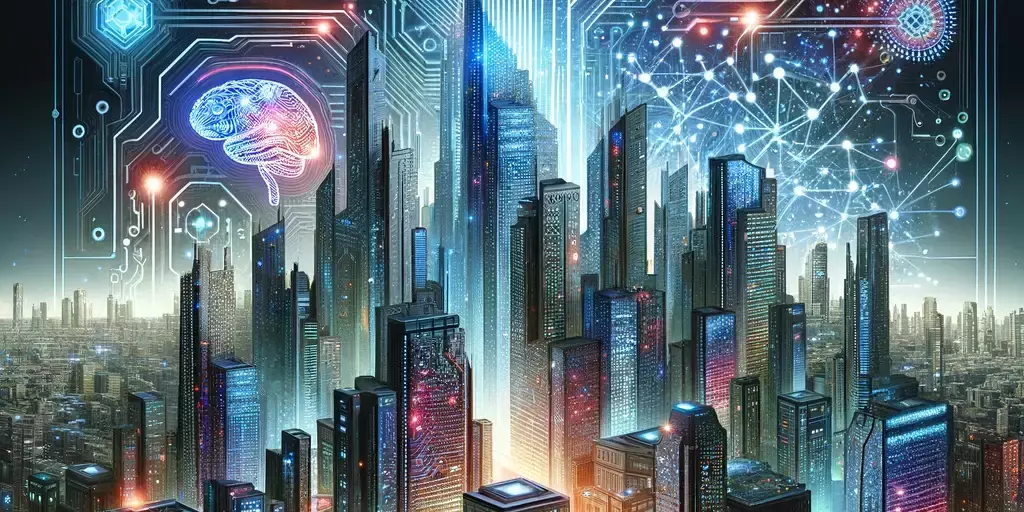
In the ever-evolving tech landscape, Generative AI stands out as a revolutionary force, reshaping industries with its ability to create new content and optimize processes. From healthcare to entertainment, its applications are vast and transformative. Join us on a journey through the intriguing world of Generative AI, exploring how it places customers and employees at the heart of technological innovation.
What is Generative AI?
Generative AI, a subset of artificial intelligence, focuses on creating new data similar to the data it was trained on. Think of it as a digital artist or writer, learning from existing works to create new, original pieces. This technology harnesses the power of machine learning models like Generative Adversarial Networks (GANs), Variational Autoencoders (VAEs), and Transformer-based models to produce text, images, music, and more.
How Does It Work?
Generative Adversarial Networks (GANs): Two neural networks — one generating data, the other evaluating it — compete to produce increasingly realistic outputs.
Variational Autoencoders (VAEs): These models compress data into a lower-dimensional space and then reconstruct it, generating new, similar data points.
Transformer-Based Models: Particularly effective for text, these models understand context and generate coherent sequences, like having a conversation with a very well-read friend.
The Magic of Generative AI
Generative AI isn’t just about automation; it’s about enhancing human creativity and efficiency. Here’s how it’s making waves across various industries:
Healthcare
- Medical Imaging: AI enhances the accuracy and speed of medical image analysis, helping doctors diagnose conditions with greater precision.
- Drug Discovery: By simulating biological processes, AI accelerates the discovery of new drugs, potentially saving lives.
- Personalized Treatment: AI designs treatment plans tailored to individual patients, improving outcomes and patient satisfaction.
Customer-Centric Approach: Patients receive more accurate diagnoses and personalized treatments, enhancing their overall experience.
Employee Empowerment: Medical professionals can rely on AI for routine analyses, allowing them to focus on complex cases and patient care.
Advertising and Marketing
- Content Creation: AI generates personalized marketing content, from advertisements to product descriptions, making campaigns more effective.
- Customer Engagement: By analyzing consumer data, AI tailors marketing campaigns to specific audiences, boosting engagement.
Customer-Centric Approach: Marketing campaigns become more relevant and engaging, resonating deeply with target audiences.
Employee Empowerment: Marketers can leverage AI to streamline content creation and focus on strategic initiatives.
Manufacturing
- Predictive Maintenance: AI predicts equipment failures, minimizing downtime and reducing costs.
- Quality Control: Generative models ensure higher quality products by detecting defects early in the production process.
Customer-Centric Approach: Customers benefit from higher quality products and faster delivery times.
Employee Empowerment: Workers are freed from repetitive tasks and can focus on innovation and quality improvements.
Software Development
- Code Generation: AI assists in writing and debugging code, enhancing developer productivity.
- Quality Assurance: Generative models help identify bugs and optimize software performance.
Customer-Centric Approach: End-users enjoy more robust and bug-free software applications.
Employee Empowerment: Developers can offload routine coding tasks to AI, enabling them to concentrate on innovative solutions and advanced problem-solving.
Financial Services
- Investment Strategies: AI generates personalized investment strategies based on vast financial data.
- Fraud Detection: Generative models detect fraudulent activities by analyzing transaction patterns.
Customer-Centric Approach: Clients receive personalized financial advice and prompt service, enhancing their satisfaction and trust.
Employee Empowerment: Financial analysts and advisors can leverage AI to provide deeper insights and spend more time on strategic planning.
Media and Entertainment
- Content Generation: AI creates music, art, and stories, pushing the boundaries of creativity.
- Personalized Experiences: Media companies use AI to personalize content, enhancing user engagement.
Customer-Centric Approach: Audiences enjoy a diverse array of creative content tailored to their preferences.
Employee Empowerment: Artists and creators can use AI as a tool to enhance their creative processes and explore new artistic possibilities.
Best Practices for Using Generative AI
As beneficial as Generative AI is, it’s still a nascent technology, and companies must follow best practices when implementing it:
- Transparency: Be clear about AI involvement in customer-facing products and services.
- High-Quality Training Data: Use diverse, high-quality data to train AI models for accurate and relevant outputs.
- Understanding Limitations: Know what AI models can and cannot do to manage expectations.
- Human Oversight: Maintain human oversight to review and approve AI-generated content before it reaches end-users.
Conclusion
Generative AI is not just a technological advancement; it represents a paradigm shift transforming industries and creating new opportunities for innovation. By leveraging Generative AI, businesses can enhance efficiency, improve decision-making, and unlock new creative potentials. As we continue to explore its capabilities, the future of Generative AI promises even more groundbreaking applications and advancements.